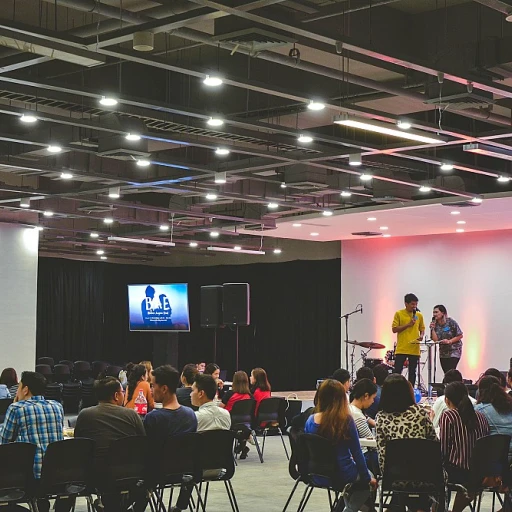
Defining Backfill in the Workplace
Clarifying the Backfill Concept
In the ever-evolving landscape of human resources, understanding what backfill means is crucial for both organizations and employees. Essentially, backfilling refers to the practice of filling a vacant position caused by an employee leaving, transferring, or being promoted within the organization. This often involves temporarily or permanently replacing the employee who previously held that job. The backfill role arises due to various circumstances such as retirement, maternity leave, or even an unexpected departure. It's important to differentiate backfill positions from newly created roles. While new positions emerge from organizational growth or restructuring, a backfill position aims to maintain the status quo by ensuring critical duties aren't left unattended. In the context of succession planning, backfilling positions becomes a strategic component. It allows companies to keep the workflow smooth, securing short-term stability while management identifies the best long-term hire. This process is made even more effective by implementing cross-training among current employees, ensuring there is always knowledgeable talent available to step into pressing roles when needed. Employers must factor various elements into their recruitment strategy when dealing with backfilling. This includes updating the job description to reflect any shift in responsibilities and employing effective management software to streamline the process. Ensuring that payroll software is updated for new hires is equally vital to avoid disruptions. In summary, backfilling is a critical part of the recruitment process in any organization aiming to maintain stability and manage talent efficiently. For those interested in delving deeper into career adjustments, exploring a guide to becoming a color analyst might provide further insights into understanding and navigating professional transitions successfully.The Role of Backfilling in Career Transitions
Backfilling as a Bridge in Career Transitions
Navigating career transitions can be a complex process, and backfilling plays a crucial role in this landscape. When an employee departs, whether due to a promotion, resignation, or extended leave, their position becomes vacant, creating an opportunity within the team or organization. Backfilling often serves as a bridge to help companies maintain productivity and stability while navigating these transitions. When a position becomes vacant, it's not just about filling a gap; it's about ensuring continuity of work, giving current employees a chance to advance, and bringing new talent into the mix. Organizations often leverage this period to assess their existing talent pool and determine the best course of action.- Temporary Solutions for Long-term Goals: Hiring a temporary replacement can offer immediate relief and keep the workflows steady. However, an effective backfill strategy also considers long-term goals, such as succession planning and development of internal candidates.
- Cross-Training and Skills Development: During the backfilling process, cross-training current employees is beneficial. It ensures that the team remains functional even amidst changes. Moreover, cross-training enhances employees' skill sets, offering them a chance to grow and possibly take on new roles within the organization.
- Impact on Recruitment Strategy: The recruitment process for a backfill position involves careful consideration. Companies must decide whether to promote from within or bring in external talent. Each decision carries its own set of implications for the team and organizational dynamics.
Challenges and Opportunities in Backfilling
Addressing Difficulties and Embracing Potential
Backfilling a position presents unique challenges and opportunities for both employers and employees. Understanding the intricacies can help in navigating these situations more effectively. Firstly, hiring for a backfill position can often be fraught with challenges. Finding suitable talent quickly is crucial to maintaining the efficiency of the team. Recruitment processes may need to be expedited without compromising on quality, which requires strong management skills and effective use of recruitment resources like payroll and management software. A vacant position can disrupt team dynamics, especially in cases where the role was pivotal. Cross training existing team members can be an efficient response, ensuring that immediate workflows remain unaffected. It can also provide current employees with opportunities for professional growth, as they might learn new skills that enhance their career trajectories. Furthermore, backfilling is not just a short-term solution. It's a chance for succession planning, promoting internal candidates and identifying top talent within the organization. This approach not only helps in promptly filling the backfill position but also aligns with the company's long-term goals by fostering loyalty and reducing turnover. However, one must also consider the cultural impact of backfilling. Bringing in new employees changes team dynamics and may require cultural adjustments. Clear communication and defined job descriptions are essential to smooth transitions, ensuring both new and existing members of the team understand their roles and responsibilities. While backfilling can present these challenges, the opportunities for improvement and growth are significant. Embracing these situations with the right strategies can ultimately enhance the organization's overall performance and efficiency. For deeper insights into accelerating career transitions, consider exploring strategies for swift advancement.Strategies for Successfully Navigating Backfill Situations
Effective Strategies for Managing Backfill Situations
Successfully navigating backfill situations requires a strategic approach that balances the needs of the organization with those of the employees involved. Here are some best practices to consider:
- Clear Job Descriptions: Ensure that the job description for the backfill position is clear and comprehensive. This helps in setting the right expectations for both internal candidates and new hires.
- Succession Planning: Implement a robust succession planning process. This not only prepares current employees for potential promotions but also ensures a smoother transition when a position becomes vacant.
- Cross Training: Encourage cross training among team members. This not only prepares employees to take on new roles but also enhances team dynamics by fostering a culture of collaboration and flexibility.
- Utilize Management Software: Leverage management software to track and manage the recruitment process efficiently. This can streamline the hiring process and ensure that the best talent is identified for the backfill position.
- Engage Current Employees: Involve current employees in the recruitment process. Their insights can be invaluable in identifying the right fit for the team and ensuring a seamless integration of new team members.
- Focus on Long Term Goals: While addressing short term needs is important, keep an eye on the long term objectives of the organization. This ensures that the backfilling strategy aligns with the company’s overall goals.
By implementing these strategies, organizations can not only fill vacant positions effectively but also enhance their overall recruitment process, ensuring that they attract and retain top talent.












